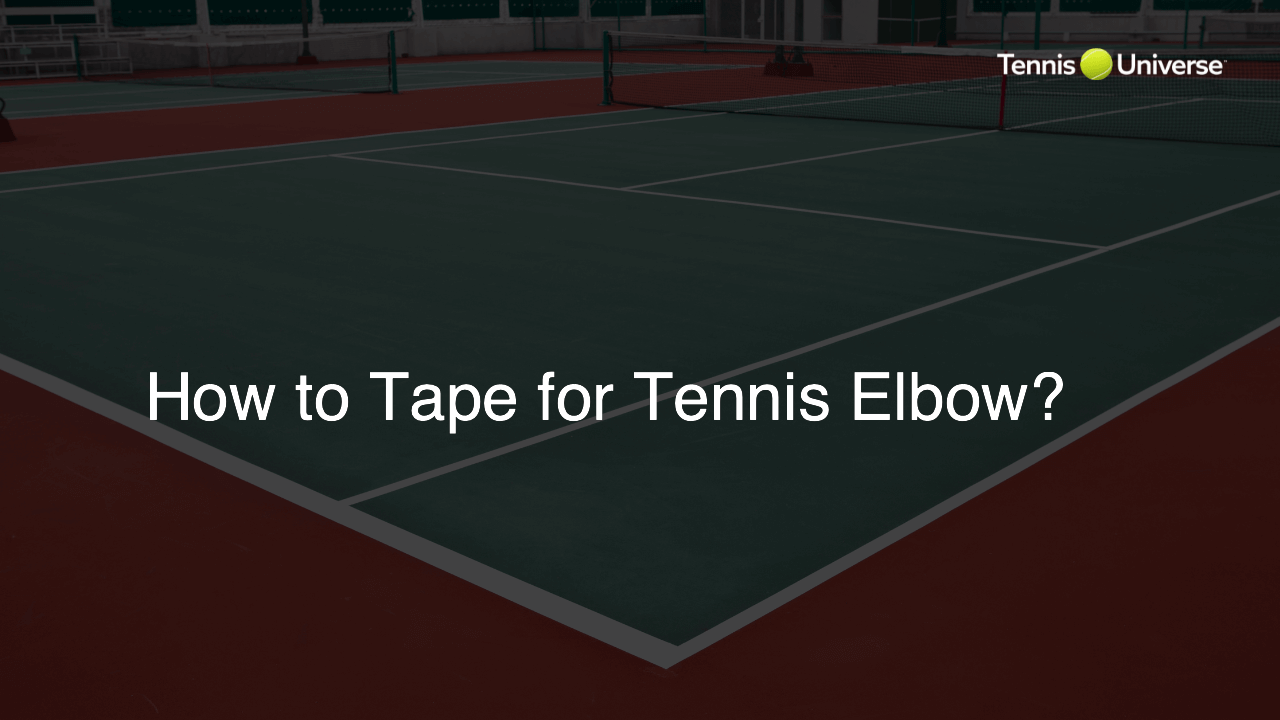To tape for tennis elbow, start by placing a strip of kinesiology tape on the outer part of the forearm close to the elbow. Stretch the tape gently and apply it diagonally across the forearm, ending near the wrist. Add two more overlapping strips in a fan-like pattern, ensuring they cover the tendon and muscles affected by tennis elbow. Avoid wrinkling, secure the tape by rubbing it, and maintain a slight bend in the elbow during application to promote support and mobility.
Understanding Tennis Elbow
Tennis elbow, also known as lateral epicondylitis, is a painful condition caused by overuse or strain of the tendons and muscles around the elbow joint. Although commonly associated with tennis players, it can affect anyone performing repetitive motions with their arm or wrist, such as gripping a tennis racket.
Benefits of Taping for Tennis Elbow
Taping for tennis elbow provides support, stability, and pain relief for the affected area. The added compression helps reduce inflammation and swelling, while also promoting circulation and healing of the injured tendon and muscles.
Choosing the Right Tape
For tennis elbow, it’s best to use kinesiology tape, commonly referred to as K-tape. This elastic therapeutic tape provides support without restricting the range of motion, making it a popular choice among athletes.
Step 1: Prepare the Area
Before applying the tape, make sure your forearm and elbow are clean, dry, and free of lotions or oils. This will help the tape stick better and ensure maximum effectiveness.
Step 2: Apply the Anchor Strip
Cut a strip of kinesiology tape long enough to span from just below your elbow to your wrist. Peel off the backing and place the end of the tape on the outer part of your forearm close to your elbow. Make sure your arm is relaxed, with a slight bend at the elbow.
Step 3: Diagonal Tape Application
With a gentle stretch, apply the tape diagonally across your forearm, following the line of your extensor muscles. The tape should end close to your wrist on the opposite side of your forearm. Press the tape down firmly, ensuring it adheres properly.
Step 4: Add Supportive Strips
Cut two more strips of tape and apply them in a similar diagonal manner, overlapping the first strip slightly. This fan-like pattern will help distribute the supportive force across the tendon and muscle group without restricting your range of motion.
Step 5: Secure the Tape
Make sure all tape edges are properly adhered to your skin, and gently rub the tape to activate the adhesive. The heat produced by rubbing will create a stronger bond, ensuring the tape stays in place during your activities.
Now that you’ve successfully taped your forearm for tennis elbow, you can confidently keep playing with a reduced risk of pain and discomfort.
Tennis Elbow Prevention and Treatment
While taping for tennis elbow can alleviate pain and support healing, preventing the condition from developing is the best approach. Incorporate the following tennis tips into your training routine to minimize the risk of tennis elbow:
1. Strength & Flexibility Exercises
Develop strong and flexible forearm muscles by incorporating exercises such as wrist flexion and extension, forearm supination and pronation, and gentle stretches. Having well-conditioned forearm muscles will help you better control your tennis racket and mitigate the risk of injury.
2. Racket Selection & String Tension
Choose a tennis racket with the proper size grip, lighter weight, and a larger head. This allows for better shock absorption and reduces the strain on your arm. Additionally, consider opting for a lower string tension, as higher tension can amplify vibrations felt by your hand and arm.
3. Proper Technique
Working on your tennis technique can help you avoid excessive stress on your arm. The correct grip, swing, and follow-through can ensure that the forces are evenly distributed across your racket, arm, and body.
Additional Treatment Options
If you’re experiencing tennis elbow symptoms, consider the following additional treatment options for relief and faster recovery:
1. Rest and Ice
Give your arm the time it needs to heal by resting it and avoiding any exacerbating activities. Applying ice to the painful area can help reduce inflammation and swelling.
2. Anti-inflammatory Medications
Nonsteroidal anti-inflammatory drugs (NSAIDs), such as ibuprofen, may help alleviate pain and inflammation. Always consult your doctor before starting new medications.
3. Physical Therapy
A physical therapist can develop a tailored exercise plan to strengthen your forearm muscles and improve flexibility. They can also provide guidance on proper technique and recommend equipment modifications, if needed.
Remember, prevention is key! Take the necessary precautions and incorporate the tennis tips outlined above to maintain your health and stay in top form on the court.
Frequently Asked Questions
Besides taping for tennis elbow, readers may have additional questions related to prevention, treatment, and the proper use of tape. Here are some frequently asked questions and their direct answers:
How often should I replace the kinesiology tape?
On average, kinesiology tape lasts between 3 to 5 days, depending on the level of activity, skin type, and environmental factors. If the tape becomes loose or loses its adhesive properties, replace it with a new application.
Can I wear the tape while showering or swimming?
Yes, kinesiology tape is typically water-resistant and can be worn during showering or swimming. However, you should let the tape dry completely before applying any additional pressure or friction, as it may compromise the adhesive.
When should I consult a doctor for tennis elbow?
Consult a healthcare professional if you experience persistent elbow pain, severe swelling, or limited range of motion that does not improve with self-care measures such as rest, ice, taping, and over-the-counter pain relievers.
Are there any complementary therapies that can help with tennis elbow?
Yes, modalities like acupuncture, massage, and ultrasound therapy can help reduce pain and improve function in some cases. Discuss these options with your healthcare provider to determine the best course of action for your specific condition.
Can tennis elbow be completely cured?
Most tennis elbow cases can be successfully treated with conservative treatment methods such as rest, physical therapy, and taping. Nonetheless, a small percentage of cases may require more advanced interventions, like corticosteroid injections or surgical intervention for lasting relief.











